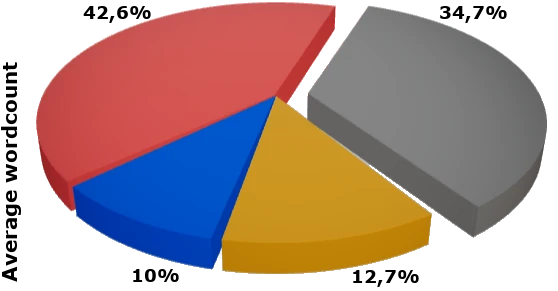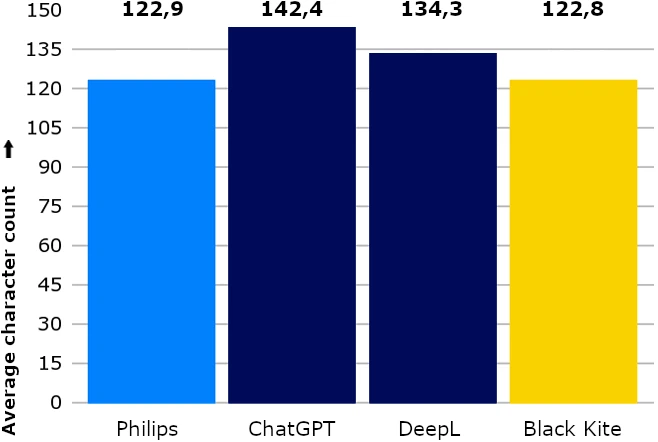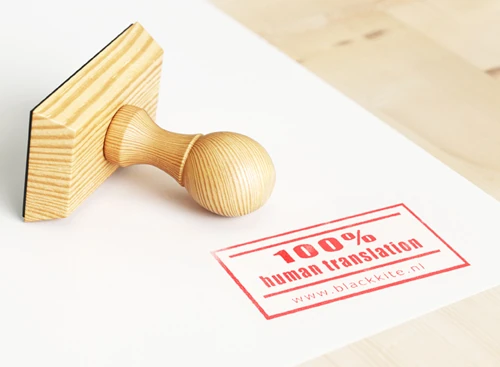Translation Quality
Translation quality is usually hard to assess. How do you determine whether your translations are best represented by an automated translation service or a human translator?
I could list the advantages of a 100% human translation, but who else is better suited to compare the leading machine translation service providers with BlacKKite than you?
Rates & Privacy Concerns
The fees for a machine translation service are charged as a fixed monthly rate (DeepL & ChatGPT) or per translated character (Google & Microsoft). Compared to the translation rates of BlacKKite, machine translation seems to be a more economical choice, but keep in mind that it still has to be proofread by a native Dutch speaker.
Is Machine Translation Free to Use?
Free of charge translation is also available when you use a (limited) web service and are willing to surrender your personal data to help train and improve the translation algorithm. Your privacy is the currency you pay with. In contrast, BlacKKite will always process your personal data in accordance with GDPR guidelines.
Do you opt for commonly used phrasing or prefer a distinctive wording that contributes to a higher SEO score?
Distinctive Capability
The result of a machine translation service trained with a bilingual corpus continues to refer to that very corpus. One could argue that the translation computer gives a cleverly formed stupid answer to a complicated question. For translators, the answer is not necessarily black or white. They know when to avoid or rather emphasize gray areas.
I use terminology very consistently, for example, when machine parts in a maintenance manual refer to a drawing. In contrast, in this blog post about the differences between the translations of translation engines and human translators, I use a variety of synonyms for the term machine translation to keep readers engaged.


On average, 57.4% of the words in my Dutch showcase translation differ to a greater or lesser extent. This originality rate says little about the quality of the translation, of course, but it does demonstrate that buyers of translation services have something to choose from. Do they opt for commonly used phrasing or prefer a distinctive wording that contributes to a higher SEO score?
Translation Length
Purchasers of technical translations sometimes restrict the number of characters used for the translation relative to the original, e.g. when text becomes invisible if the character count exceeds a certain threshold. As the Dutch language often requires more characters for the same message than the English language, the translator should keep track of text expansion and delete excess characters.
Deleting is one of the translator's standard tools that is missing from the toolbox of the translation engine. Only a machine translation pre-editor or post-editor can truncate a computer translation. The word and character density of my Dutch showcase project are on average just a little below those of Philips' original manual. The automated translation tool DeepL uses on average a good ten characters more than the original manual, and ChatGPT even twenty characters.

Translation Turnaround Time
Machine translations excel in speed. The translation of your documentation will appear on the screen in no-time. With an average daily translation capacity of 2,500 words, I cannot match that, not even with the assistance of the most advanced CAT tool. However, keep in mind that a computer translation still needs to be proofread by a native speaker of Dutch before the text is suitable for publication.
Moreover, speed is not necessarily something positive. A translation can benefit from the translator contemplating it for a while to further ponder the matter at hand. A fresh look can prevent mistakes and solve creative blockages!
Machine or Human Translation?
The main differences between human translation and machine translation are the lack of quality assurance and privacy protection in machine translation. For the time being, the human translator remains the leading force in high-quality tailor-made translations with respect for privacy.
Machine Translation Application
When good is just good enough, the text needs to be translated quickly and cheaply, does not contain privacy-sensitive information, and the result will be post-edited by a proofreader, a machine translation could be a sound alternative.
Decide for yourself and order a Dutch translation now or request a free quote.
Author bio

